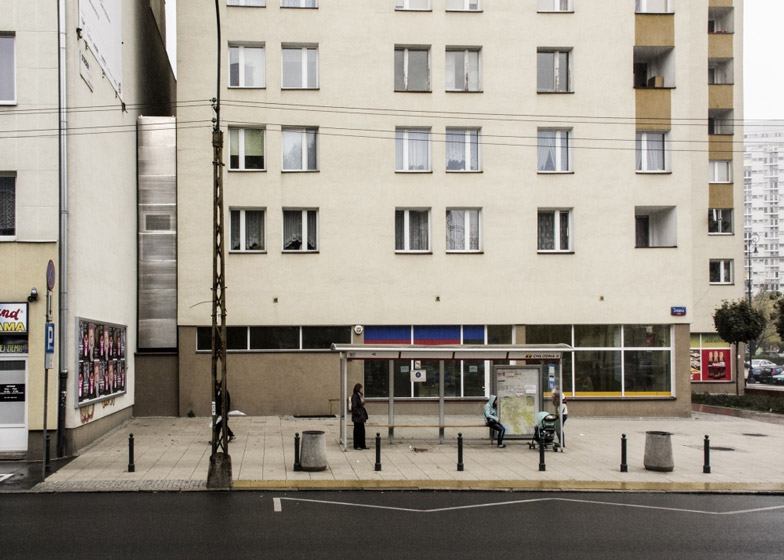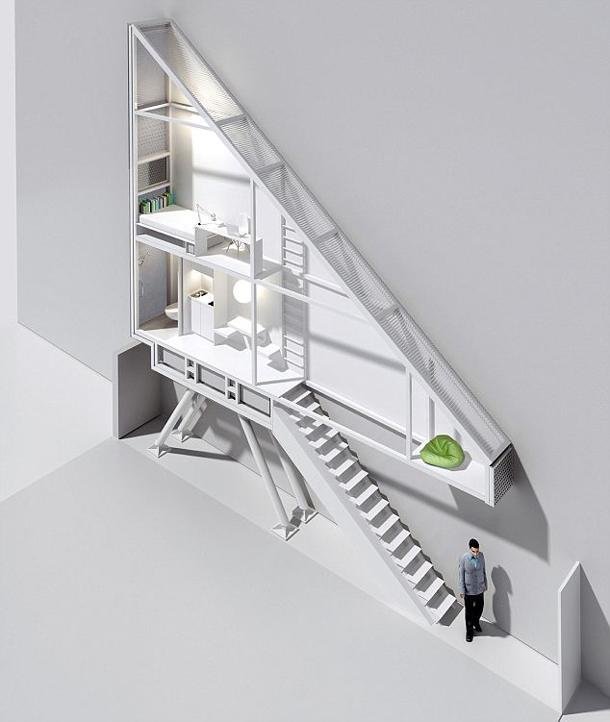Crawl Inside the Skinniest House in the World
 Fact: Only 5-feet wide, the world’s thinnest house is located in Warsaw, Poland
Fact: Only 5-feet wide, the world’s thinnest house is located in Warsaw, Poland
Now I know that rent in New York has reduced most people living there to call little more than a shoebox home, but wedged in between a 152cm gap in two buildings on the streets of Warsaw, Poland is a 2-storey abode – the world’s narrowest house.
Architect Jakun Szczesny, walking down Zalazna Street one day, was drawn to the space between two edifices, and wondered whether anyone could live there – who would want to live there. Enter the Keret House, a temporarily home for traveling writers and those satisfied with a hermit lifestyle. Szczesny himself says to stay there requires a sense of humour, as one can’t live long in a place so small.
 After approaching the Israeli writer Etgar Keret, the two got working on a design for the triangular home, developed with just enough space for an individual to live and work – at its thinnest point the house is only 72cm wide. The house was a project supposed to last 2 years, but has already become a Warsaw icon, and situated itself firmly on the maps of visiting travelers. The modern, minute dwelling has become a solid feature in the once war-torn area of Poland, and represents the mismatched nature of the city’s architecture.
After approaching the Israeli writer Etgar Keret, the two got working on a design for the triangular home, developed with just enough space for an individual to live and work – at its thinnest point the house is only 72cm wide. The house was a project supposed to last 2 years, but has already become a Warsaw icon, and situated itself firmly on the maps of visiting travelers. The modern, minute dwelling has become a solid feature in the once war-torn area of Poland, and represents the mismatched nature of the city’s architecture.
But Keret House is not the only strange structure the world of architecture has to offer us. Japan is reinventing the house as we know it with designs like the Transparent House – a house completely see-through, including all bathroom and bedroom areas, where passers-by on the street below can stop for a stare if they so choose; and the Slide House – a child’s version of heaven, built with an indoor slide that circles the inside of the home, equipped with stairs climbing up to the 3rd floor that you can climb before slithering down again. And repeat.
 Germany is home to the world’s smallest house at 1 meter squared, a box that you can use to both study in, sitting at a rather cramped desk, or push over onto its side, and have a lie-down. The obvious advantage to this place is that it’s portable, and does in fact make its way across the country. There is a church converted into a modern family home in Holland; Pierre Cardin’s futuristic bubble house in Cannes, France; a replica of the Flintstone House owned by Dick Clark in California, USA; and last but not least, the Walking House made by MIT – a fully self-functioning 10 foot unit that is both solar and wind powered, and can stroll around town (or any other terrain) at a steady walking pace.
Germany is home to the world’s smallest house at 1 meter squared, a box that you can use to both study in, sitting at a rather cramped desk, or push over onto its side, and have a lie-down. The obvious advantage to this place is that it’s portable, and does in fact make its way across the country. There is a church converted into a modern family home in Holland; Pierre Cardin’s futuristic bubble house in Cannes, France; a replica of the Flintstone House owned by Dick Clark in California, USA; and last but not least, the Walking House made by MIT – a fully self-functioning 10 foot unit that is both solar and wind powered, and can stroll around town (or any other terrain) at a steady walking pace.
What kind of house would you design, if you had the chance? Find out more about what other interesting facts Poland has to offer, from bent trees to Marie Curie, in our True or False facts game!


